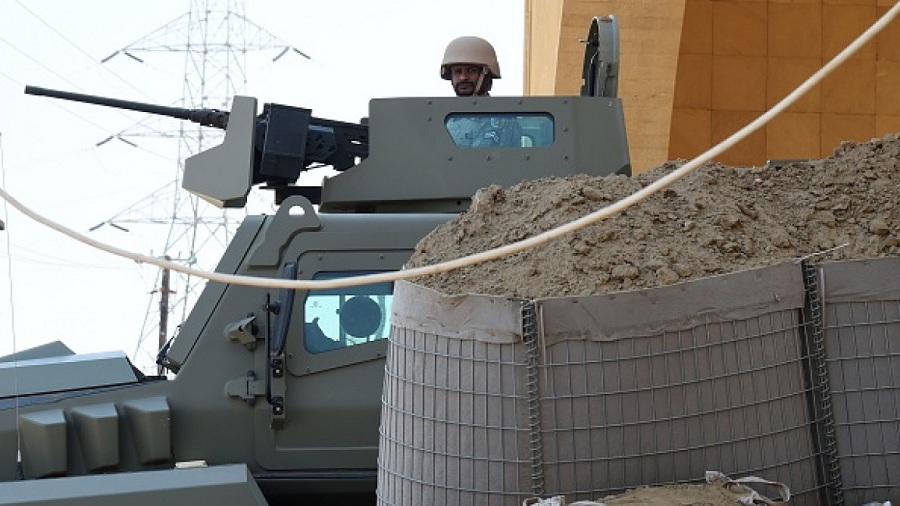Between March 2022 and June 2023, Saudi border guards killed hundreds of Ethiopian migrants attempting to cross the border from Yemen into the oil-rich kingdom, according to a new Human Rights Watch report released on Monday. The report comes as Saudi Arabia implements an anti-migrant policy at home and a campaign to boost its image abroad.
The rocky, mountainous region around Sadaa – a hardscrabble city in northern Yemen right by the Saudi border – has turned into lethal terrain, according to human rights groups. Bodies of dead or seriously wounded migrants, mostly from Ethiopia, have been spotted in satellite imagery and social media posts from the border, providing harrowing testimony of abuses, notes the latest report by the New York-based Human Rights Watch (HRW).
“They Fired on Us Like Rain”, an HRW report released on Monday, August 21, records widespread abuses committed on the Yemen-Saudi border between March 2022 and June 2023.
“Saudi border guards have used explosive weapons and shot people at close range, including women and children, in a pattern that is widespread and systematic. If committed as part of a Saudi government policy to murder migrants, these killings would be a crime against humanity,” notes the report.
Over the past few months, reports have been mounting of grievous violations on the migration track known as the “Eastern Route” or the “Yemeni Route”, which runs from the Horn of Africa, across the Gulf of Aden, through Yemen and into Saudi Arabia.
A July 5 report by the Mixed Migration Centre, an independent data institution within the Danish Refugee Council, said Ethiopians were being “systematically” killed by “security officials operating under Saudi Arabian state authority."
In October 2022, the UN published its Expert Communications by special rapporteurs and working groups highlighting cross-border killings, “using artillery shelling and small arms fired by Saudi security forces”. Nearly 430 people were killed between January 1 and April 30, 2022, according to the communique. The latest HRW report provides witness accounts of Ethiopian migrants who tried to cross the border from Yemen to Saudi Arabia – and it makes grim reading.
‘I saw 30 killed people on the spot’
In February 2023, a 14-year-old from Ethiopia’s Oromia region, identified in the HRW report as “Hamdiya”, attempted to cross the Yemeni-Saudi border in a group of around 60 people.
The horror unfolded immediately after they crossed into Saudi territory, when they came under attack by border guards, Hamdiya told HRW.
“I saw people killed in a way I have never imagined,” said Hamdiya. “I saw 30 killed people on the spot.”
In a bid to escape the repeated firing, the Ethiopian teenager crawled under a rock and at some point, fell asleep. “I could feel people sleeping around me. I realised what I thought were people sleeping around me were actually dead bodies. I woke up and I was alone,” she said.
Like Hamdiya, many witnesses claimed to have been shot with mortars or other explosive weapons by Saudi border guards.
‘The dead bodies are there’
In one incident, a survivor recounted that he was part of a group of 170 people who attempted to cross the border when they came under fire. “I know 90 people were killed, because some returned to that place to pick up the dead bodies – they counted around 90 dead bodies,” he explained.
Another interviewee went to the Saudi border to collect the body of a girl from his village. “Her body was piled up on top of 20 bodies,” he said. “It is really impossible to count the number. It is beyond the imagination. People are going in different groups day to day. The dead bodies are there.”
While the exact number of migrants killed while crossing the border is impossible to determine, the HRW report was compiled from interviews with 42 Ethiopians or relatives of Ethiopians who attempted the border crossing. The rights group also analysed more than 350 videos and photographs posted on social media or gathered from other sources in addition to satellite imagery.
Data gathering from the remote border area is hampered by the lack of international mechanisms to monitor the human rights situation in Yemen.
Barely two years ago, the UN Human Rights Council voted to disband the Group of Eminent Experts on Yemen (GEE), an international investigating body, following a “tireless lobbying campaign” by Saudi Arabia, according to a 2021 HRW statement.
The decision has left no system of accountability in the world’s poorest Arab nation ravaged by a civil war that has killed more than 150,000 people. It is also failing citizens on another continent who are fleeing poverty and ethnic conflict.
‘Saudization’ increases targeting of migrants
An estimated 750,000 Ethiopians currently live in Saudi Arabia according to the International Organization for Migration (IOM). Roughly 500,000 entered the country illegally, according to the IOM, forcing them to hide from Saudi authorities.
The oil-rich Gulf kingdom has long been a magnet for impoverished migrants in the region, particularly from Yemen, which shares a 1,300-kilometre border with Saudi Arabia. Non-Saudi nationals account for more than 30 percent of the kingdom’s population.
But in 2017, Riyadh implemented a massive "Saudization" policy, aimed at reducing its dependence on migrant workers. It resulted in intensified police crackdowns, detentions of illegal migrants and massive expulsion campaigns.
Riyadh’s “Saudization” policy came as fighting raged in neighbouring Yemen and in the Horn of Africa, turning migrants into pawns in regional tensions.
Source: France 24



























